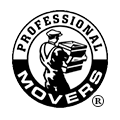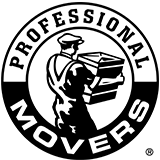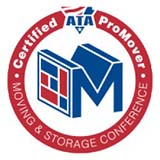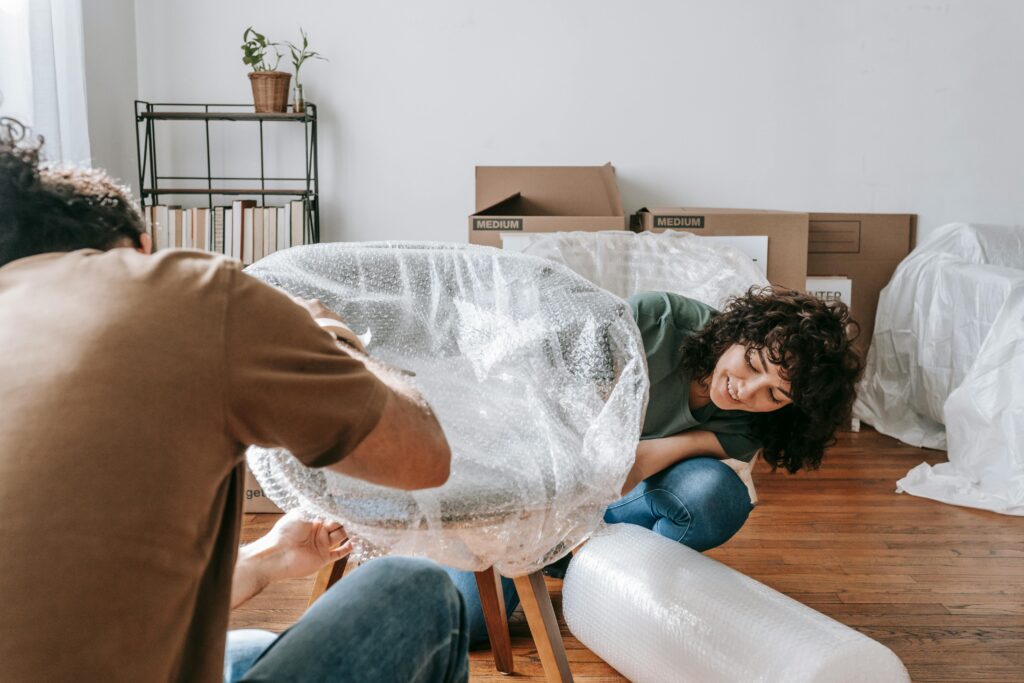
When it comes to wrapping furniture for a move, taking steps to protect your belongings can prevent unnecessary damage. From choosing the right materials to learning how to secure each item properly, preparing furniture for transit may feel overwhelming. Fortunately, with guidance from a reliable moving team and a focus on proper techniques, you can significantly lower the chances of scratches, dents, or breakage. This guide walks you through effective methods to help make your moving process smoother and better organized.
Choosing the Right Wrapping Materials
Picking the right materials is an essential part of protecting your furniture during a move. For wooden pieces, furniture blankets or padded moving covers work well to prevent scratches and surface damage. For delicate items such as glass tabletops or mirrors, bubble wrap provides a good layer of cushioning. Use packing tape to hold the bubble wrap securely in place, but avoid sticking tape directly on wood or upholstery to prevent damage.
Plastic stretch wrap works especially well for keeping drawers, doors, and other moving parts from opening during transport. For extra protection, consider using corrugated cardboard to shield sharp corners and fragile edges. No matter which materials you choose ensure they’re snugly secured to prevent shifting during the trip. Proper wrapping materials go a long way toward ensuring your furniture reaches your new home in great shape.
Disassembling Furniture for Easier Wrapping
Disassembling larger furniture items before wrapping them can make the whole process much easier. Follow these steps to break down your furniture safely and efficiently:
- Evaluate Each Piece: Check for removable parts such as legs, shelves, or headboards.
- Gather Tools in Advance: Have the necessary screwdrivers, Allen keys, or wrenches on hand.
- Remove Parts Carefully: Take your time to detach components without forcing them to prevent damage.
- Label and Store Hardware: Place screws, bolts, and small parts into labeled bags so reassembly goes smoothly at your new home.
Taking apart furniture where possible not only makes wrapping easier but also helps maximize truck space and reduces the risk of damage.
Wrapping Techniques for Different Furniture Types
Different furniture types need different wrapping approaches to ensure full protection. For upholstered furniture like sofas and chairs, start with a furniture blanket or plastic furniture cover to guard against dirt, tears, and scuffs. Secure the cover with plastic stretch wrap to hold it in place.
When wrapping wooden furniture, such as tables, dressers, or bookshelves, focus on protecting the corners and legs. Use padded moving blankets for general coverage, and add cardboard corner protectors for extra cushioning on vulnerable edges.
For fragile glass surfaces, including tabletops or cabinet doors, use a layer of bubble wrap followed by a sturdy layer of cardboard or foam board. Tape these protective layers together, making sure no tape touches the glass directly.
Tailoring the wrapping process to each furniture type helps minimize risk and gives each piece the protection it needs.
Securing Wrapped Furniture for Safe Transportation
Once your furniture is wrapped, securing it inside the moving truck is just as important as the wrapping itself. Follow these steps to keep everything in place:
- Placement Strategy: Load the heaviest items on the bottom with lighter items on top to create a balanced stack.
- Tie-Downs: Use heavy-duty straps or ropes to secure larger furniture to the truck walls to prevent movement during transit.
- Padding Between Items: Place extra blankets, foam pads, or pieces of cardboard between items to prevent friction and damage.
- Stability Check: Before you start driving, gently shake larger items to check if they’re firmly held in place.
Properly securing furniture not only protects your belongings but also ensures the safety of everyone involved in the move.
Labeling and Organizing Wrapped Furniture Items
Clear labeling and smart organization make a big difference when unloading and setting up at your new home. Label each wrapped piece with the room it belongs to, either with a label, piece of masking tape, or color-coded system. For example, blue labels for bedrooms, green for the kitchen, and so on.
Keep a written inventory list that matches each label with a brief description of the item. This can help you check off pieces as they arrive and quickly spot if anything is missing.
When labeling furniture, always place labels on the sides rather than the top so they’re easy to spot even if items are stacked. Group similar items together in the truck for easier unloading. These simple steps save time during both unloading and setup, giving you a more organized start in your new space.
Related Topics:
Get Your Move Estimate
Professional Movers.com believes in complete transparency. We have no hidden fees with our pricing. Fill out our simple, online form and one of our Moving Consultants will reach-out to learn more about your move, answer your questions, and provide you with an accurate estimate.
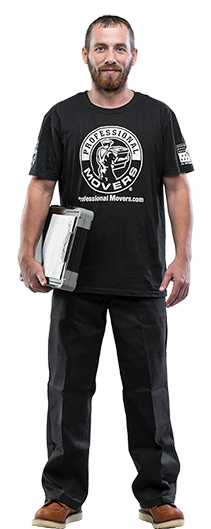
"*" indicates required fields


